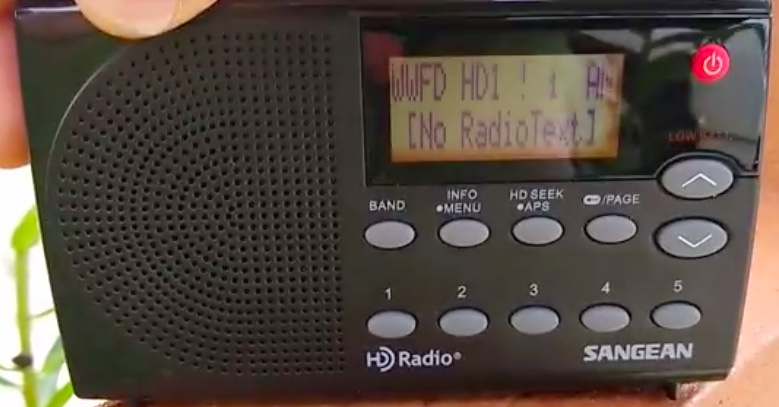(Source: Radio World via Ulis K3LU)
A prominent advocate for the AM band is petitioning the FCC to allow stations to use all-digital transmissions in the United States.
Bryan Broadcasting Corp. on Monday filed a petition for rulemaking asking the commission to initiate a proceeding to authorize the MA3 all-digital mode of HD Radio for any AM station that chooses to do so.
Permitting such modernization would “give AM broadcasters a needed innovative tool with which to compete” without harming others in the spectrum ecosystem, it wrote.
Bryan is licensee of four AM stations, five FMs and six FM translators in Central Texas. Ben Downs is the vice president and general manager, and submitted the petition along with the company’s attorney David Oxenford of Wilkinson Barker Knauer. Downs also has served on the NAB board in the past, and he has been a vocal advocate for various regulatory steps to “revitalize” the AM band.
All HD Radio receivers in the market that have AM functionality would be able to receive such all-digital signals. But legacy AM receivers would not, which has long been a barrier to serious discussion of all-digital. Now, some observers say, the availability of FM translators for AM licensees has made something that once seemed unthinkable at least worth discussing.
There is one AM station in the country with special temporary authority to broadcast in all-digital. Hubbard’s WWFD in Frederick, Md., near the nation’s capital has been on the air since last summer. The station’s Dave Kolesar has been speaking in public about the ongoing experiment and will do so again at the upcoming NAB Show.[…]


Whilst any move from 1910 AM technology is progress, HD radio is not the best choice even in the all digital mode. Firstly it is wasteful of electricity because it still transmits a carrier which contains no information at all. The receiver as in AM/all digital HDradio needs it to have it for a demodulation frequency reference and its amplitude is used to control the gain of the receiver so the volume doesn’t change as the RF signal level changes.
DRM which will also work in the same band does not use a carrier but low power pilot signals interleaved in the COFDM signal which are not only used as a frequency and amplitude reference but can also be used to operate a firmware equaliser to improve reception reliability. Another advantage is that all the COFDM signals are unique, where as in HD radio those below the carrier are a mirror image of those above which reduces the ability for error correction to correct errors thus reducing reception reliability in the presence of interference and particularly noise.
Other differences are lower resolution slideshow images, no indexed multipage text ability (Journaline), no Electronic Program guide, no Alternate frequency system which will switch between transmissions with identical content depending on the received quality. For example where the station’s FM translator has a noise free signal and the HD signal has a lot of errors.
Xperi charges broadcasters and receiver manufacturers licence fees, and their system is secret, but has not been upgraded to use xHE-AAC audio compression which can produce very good quality speech at tiny data rates.
As far as I am aware there has never been a side by side comparison of all Digital HD radio and pure DRM despite the fact that AM transmitters can be modified to carry either of these digital signals.
I have concerns about AM digital replacing analog. Another grift being perpetrated to help avoid FCC crackdown on electronic power devices polluting the AM band noise floor with QRM Another game to obsolete existing analog receivers so China can get more electronics business. I am against it for that reason. Any issuance be contingent on Digital broadcast being compatible with analog AM (be able to receive the broadcast albeit with the background noise)
The joy of MW Broadcasting is that the band can open up after the sun goes down. Unfortunately, propagation effects are pretty severe, as are the noises that many devices can make. Listening to a far-away digital signal might be rather difficult as it fades in and out.
The problem with the test of WWFD is that there are no adjacent digital stations, there are no similar digital signals underneath it, and it is not one of the stronger stations so we can’t tell how well it skips at night.
It’s not a bad test for propagation purposes, but I have my doubts that it proves much of anything else.
I totally applaud this initiative! No analog fallback with its interference on the MW band. The FCC has been dragging its feet on this issue for far too long! Also, the FCC should probably mandate (I hate that word) strictly digital on the MW band IF a MW broadcaster also uses an FM translator for their MW signal.